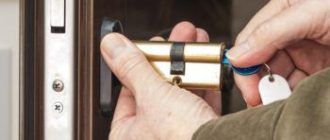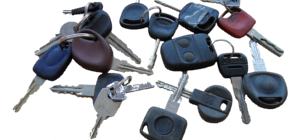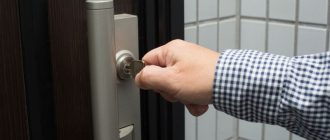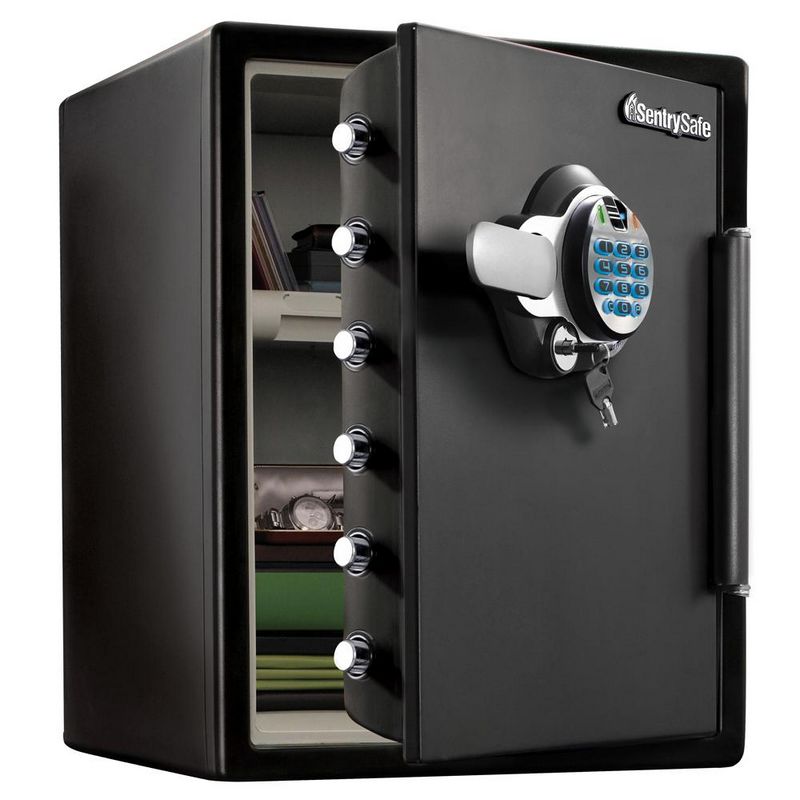
Is biometric lock safe
Biometric technology has gained popularity in recent years as a secure and convenient way to protect personal and valuable belongings. Biometric locks use unique physical characteristics, such as fingerprints or iris scans, to grant access, eliminating the need for traditional keys or passwords. But is a biometric lock really safe?
When it comes to security, biometric locks have several advantages. Firstly, it is nearly impossible to duplicate or forge a person’s biometric data, providing a high level of security. Additionally, biometric locks offer convenience and ease of use, as there is no need to remember passwords or carry around keys. This makes them particularly appealing for individuals who frequently forget or lose their keys.
However, biometric locks are not without their drawbacks. One major concern is the possibility of false acceptance or false rejection rates. False acceptance occurs when the lock mistakenly grants access to an unauthorized user, while false rejection happens when the lock denies access to an authorized user. These errors can be frustrating and potentially create security vulnerabilities.
Another potential drawback of biometric locks is their vulnerability to hacking. As with any technology, biometric locks are not immune to being hacked or compromised. If a hacker gains access to the biometric data stored in the lock’s database, they could potentially bypass the lock and gain unauthorized entry. It is crucial for manufacturers to implement strong encryption and security measures to protect against such threats.
In conclusion, biometric locks offer a secure and convenient alternative to traditional locks. However, they are not infallible and come with their own set of vulnerabilities. It is essential for users to carefully consider their specific security needs and conduct thorough research before investing in a biometric lock.
What is a biometric lock?
A biometric lock is a type of lock that uses a person’s unique physiological or behavioral characteristics to grant access. It is considered a safe and secure form of lock technology. Instead of a traditional key or numerical code, a biometric lock relies on biometric data such as fingerprints, iris patterns, or facial recognition to identify and authenticate individuals.
How does a biometric lock work?
A biometric lock is a type of lock that uses unique physical or behavioral features of an individual to grant or deny access. These features can include fingerprints, handprints, iris patterns, voice patterns, or facial recognition.
When a biometric lock is used, the individual first needs to register their biometric data with the lock. This involves scanning or recording the unique feature, such as their fingerprint or iris pattern, and storing it securely in the lock’s system.
When the individual wants to gain access to the locked area, they need to present their biometric feature to the lock. The lock then compares the presented feature with the registered data to verify the individual’s identity.
If the presented feature matches the registered data within a certain level of tolerance, the lock will unlock and grant access. This process typically takes only a few seconds.
It’s important to note that biometric locks are designed to be safe and secure. The technology used in these locks is highly advanced and difficult to replicate or hack. The chances of someone being able to bypass a biometric lock without the registered biometric data are extremely low.
However, like any technology, biometric locks are not perfect and can have limitations. For example, if the registered biometric data is not accurately recorded or the lock’s sensors are not functioning properly, the lock may not recognize the user and deny access.
Overall, a biometric lock is a reliable and efficient way to enhance security. It provides a high level of convenience by eliminating the need for keys or codes, and the unique biometric features make it difficult for unauthorized individuals to gain access.
Pros of biometric lock technology
Enhanced security: Biometric locks use unique physical characteristics such as fingerprints, retinas, or facial recognition to grant access. Since these traits are difficult to replicate, biometric locks offer a high level of security and can greatly reduce the risk of unauthorized access.
Convenience: With biometric locks, there’s no need to carry around keys or remember passwords. Users simply need to provide their biometric data, such as a fingerprint or scan their face, to gain access. This makes it convenient and easy to use, especially in situations where carrying keys or remembering passwords is inconvenient or impractical.
Avoids the risk of lost or stolen keys or codes: Traditional locks rely on keys or passcodes, which can be lost or stolen. With biometric locks, there’s no risk of losing or misplacing keys since the user’s unique physical characteristics are used for authentication.
Quick and accurate identification: Biometric locks provide fast and accurate identification of authorized individuals. This can be particularly useful in high-security areas where efficient access control is essential.
Audit trail: Biometric locks can often be integrated with access control systems that provide audit trails. This means that administrators can easily monitor and track access attempts, ensuring accountability and enhancing security measures.
Difficult to spoof: Biometric locks are difficult to spoof compared to traditional locks that can be picked or hacked. The unique biological traits used by biometric locks make it challenging for intruders to bypass the security measures.
Customizable access: Biometric locks can be programmed to grant access to specific individuals or groups, allowing for personalized and customizable access control. This is particularly useful in scenarios where different levels of access need to be granted to different individuals.
Reduced reliance on physical keys: Biometric locks eliminate the need for physical keys, reducing the risk of lost or duplicated keys. Additionally, it eliminates the need for carrying multiple keys for different locks, making it more convenient for users.
Modern and innovative: Biometric lock technology is a modern and innovative alternative to traditional locking systems. Implementing biometric locks can enhance the overall look and feel of a space, while also providing advanced security features.
Convenient and time-saving
One of the major advantages of biometric lock technology is its convenience and time-saving capabilities. Unlike traditional locks that require a physical key or a combination code, biometric locks use unique physical characteristics, such as fingerprints or retinal scans, to grant access. This eliminates the need for keys that can be lost or stolen, and makes it easy for authorized individuals to gain entry without fumbling with keys or remembering complex codes.
Biometric locks offer a quick and efficient way to secure your belongings or property. By simply scanning a fingerprint or an eye, you can gain immediate access to the locked area. This not only saves time but also alleviates the stress of dealing with lost keys or forgotten codes. It is especially beneficial in high-traffic areas where multiple people need access, such as office buildings or apartment complexes.
This technology can also be integrated with other systems, such as time-tracking or attendance systems, to further enhance convenience. For example, employees can easily clock in and out by scanning their fingerprints, eliminating the need for punch cards or time-consuming manual processes.
While biometric locks provide convenience and time-saving benefits, it is important to consider the security aspect as well. Biometric data is unique to each individual and cannot be easily replicated, making it harder for unauthorized individuals to gain access. However, it is crucial to ensure that the biometric lock system is well-protected against hacking or data breaches to maintain its safety.
High level of security
A biometric lock provides a high level of security to protect your belongings. Biometric technology uses unique physical characteristics, such as fingerprints, iris patterns, or facial recognition, to authenticate access. These characteristics are extremely difficult to duplicate or fake, making it nearly impossible for others to gain unauthorized access.
Compared to traditional lock and key systems, biometric locks offer a more secure option. With a biometric lock, there is no need to worry about lost or stolen keys, as access is granted based on individual biometric data. This eliminates the risk of someone finding or duplicating your key and gaining entry to your property.
Furthermore, biometric locks provide an added layer of security because they cannot be easily tampered with or bypassed. Unlike traditional locks that can be picked or forced open, biometric locks require a direct connection with the authorized user’s unique biometric data. This makes them highly resistant to hacking, lock picking, or other traditional intrusion methods.
In addition, biometric locks can also offer features like real-time monitoring and audit trails, which can provide valuable information about who accessed a particular space and when. This can be useful for security purposes and can help identify any potential breaches.
Overall, the use of biometric locks provides a safe and secure solution to protect your property and ensure that only authorized individuals can access it. While no security measure is perfect, biometric locks offer a higher level of protection compared to traditional lock and key systems.
No need to remember keys or passwords
One of the major benefits of a biometric lock is that there is no need to remember keys or passwords. With a biometric lock, your unique physical characteristics, such as fingerprints or facial recognition, are used to grant access. This eliminates the risk of forgetting keys or passwords and provides a convenient and seamless way to unlock doors or safes.
Additionally, the use of biometric data for authentication purposes is considered to be highly secure. Each person’s biometric data is unique and difficult to replicate, making it significantly harder for unauthorized individuals to gain access. This added layer of security ensures that your belongings or premises are protected.
However, it is important to note that biometric locks are not entirely foolproof. There have been instances where biometric systems have been compromised, either due to vulnerabilities in the technology or by skilled hackers. Therefore, it is crucial to choose a reliable and well-tested biometric lock system to minimize the risk of unauthorized access.
Cons of biometric lock technology
While biometric lock technology is generally considered to be a secure and convenient form of access control, there are some drawbacks to consider:
- False recognition: Biometric locks can sometimes have difficulty accurately recognizing fingerprints, especially if they are worn or dirty. This can result in false acceptance or rejection, which can be frustrating for users.
- Cost: Biometric lock technology can be more expensive compared to traditional lock systems. The cost of purchasing and installing biometric locks, as well as maintaining and updating the software and hardware, can be a significant investment.
- Vulnerability to hacking: Like any electronic system, biometric locks are not immune to hacking attempts. While the technology used in biometric locks is generally secure, there is always a risk of vulnerabilities being discovered and exploited by hackers.
- Privacy concerns: Biometric lock technology raises potential privacy concerns as it involves the collection and storage of personal biometric data. There is always a risk that this data could be hacked or misused.
- Power dependency: Biometric locks require a power source to function. In the event of a power outage or failure, the lock may become temporarily unusable, which can be an inconvenience or security risk.
Overall, while biometric lock technology offers many advantages in terms of convenience and security, it is important to consider these potential drawbacks before implementing it in a security system.
Vulnerability to hacking
One of the main concerns with biometric lock technology is its vulnerability to hacking. While biometric locks are designed to provide enhanced security by using unique physical characteristics such as fingerprints, facial recognition, or iris scans, they are not completely foolproof.
Like any other electronic device, biometric locks can be susceptible to hacking attempts. Skilled hackers can potentially find vulnerabilities in the system and exploit them to gain unauthorized access. This can be a significant concern, especially for high-security areas or sensitive information that needs to be protected.
However, it’s worth noting that the level of vulnerability may vary depending on the specific biometric lock system being used. Manufacturers are constantly working to improve the security features of biometric locks, implementing encryption and other measures to prevent hacking attempts.
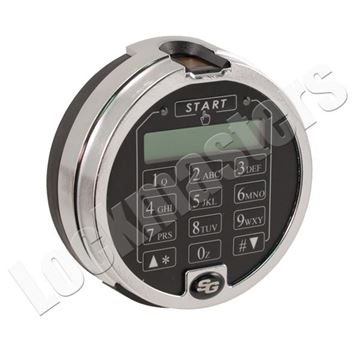
Additionally, biometric locks usually have backup authentication methods in case the biometric data cannot be recognized correctly. This adds an extra layer of security and reduces the risk of unauthorized access.
Overall, it is important to consider the potential vulnerability to hacking when using a biometric lock. While they provide convenient and secure access, it is crucial to stay vigilant and ensure that the latest security measures are in place to minimize the risks.
Expensive installation and maintenance
While biometric locks offer a high level of security, one major drawback is their expensive installation and maintenance costs. The technology behind biometric locks is complex and requires specialized equipment and expertise for proper installation. This can result in significant costs for homeowners or businesses looking to implement biometric lock systems.
In addition to the initial installation expenses, regular maintenance is also necessary to keep biometric locks functioning properly. This may involve software updates, calibration, and occasional repairs. The cost of maintenance can add up over time, making biometric locks a pricier option compared to traditional locks.
However, it is important to consider that the added security provided by biometric locks may outweigh the higher costs for some individuals or organizations. The convenience and peace of mind offered by biometric lock technology may be worth the investment for those who prioritize safety and protection.
Reliance on electricity
One of the potential limitations of biometric locks is their reliance on electricity. Unlike traditional key locks, biometric locks often require electricity to operate, as they need power to scan and recognize fingerprints or other biometric data. This means that if there is a power outage or the lock’s battery dies, you may be locked out of your property until the power is restored or the battery is replaced.
While most biometric locks come equipped with backup battery systems to mitigate this risk, there is still a chance that these systems can fail or run out of power. Additionally, if the lock is connected to a larger security system that is dependent on electricity, such as an alarm system, a power outage could render the entire system inoperable.
However, it is worth noting that many biometric locks on the market today are designed to be energy-efficient and have low power consumption. This helps to extend the lifespan of the lock’s batteries and reduce the likelihood of power-related issues. Additionally, some advanced biometric locks can also be operated manually using a traditional key or a PIN code as a backup, providing an alternative method of entry in case of power failure.
Overall, while the reliance on electricity can be seen as a potential drawback of biometric locks, it is important to weigh this against the enhanced security and convenience they offer. As with any technology, it is essential to consider the specific needs and circumstances of your property before deciding if a biometric lock is the right choice for you.
Are biometric locks safe?
Biometric locks are a modern and advanced form of security technology that utilize unique biological traits, such as fingerprints or facial recognition, to grant access. While they offer convenience and improved security measures, there are both benefits and potential drawbacks to consider when using biometric locks.
Pros:
- High level of security: Biometric locks provide a high level of security as they use unique biological traits that are difficult to replicate.
- Convenience: With biometric locks, there is no need to remember and carry keys or remember passwords, as access is granted based on the individual’s unique biological traits.
- Quick and efficient: Biometric locks offer quick and efficient access, as the authentication process is typically fast. This can be particularly useful in commercial or high-traffic settings.
- Difficult to tamper with: Unlike traditional locks, biometric locks are difficult to tamper with, as they require physical presence and unique biological traits for access.
Cons:
- Potential false rejection or acceptance: Biometric locks may have a margin of error, resulting in false rejection or acceptance. Factors such as dirt, moisture, or changes in the individual’s biological traits can affect accuracy.
- Cost: Biometric locks can be more expensive than traditional locks, which may make them less accessible for some individuals or businesses.
- Privacy concerns: The use of biometric data raises privacy concerns, as it involves collecting and storing individuals’ biological traits. Safeguarding this data is crucial to prevent unauthorized access.
- Reliance on power source: Biometric locks require a power source, such as electricity or batteries, to function. In the event of a power failure or drained batteries, access may be restricted.
In conclusion, biometric locks offer advanced security features and convenience, but they also come with potential drawbacks. It is important to weigh the pros and cons, as well as consider individual needs and circumstances, before deciding to use a biometric lock.
The potential risks
While biometric locks offer convenience and advanced security features, there are potential risks associated with their use. One of the main concerns is whether or not a biometric lock is truly safe.
A biometric lock operates by scanning and analyzing unique physical characteristics, such as fingerprints or facial features, to grant access. However, there is always a slight chance of false positives or false negatives, which can lead to unauthorized access or denied entry for legitimate users.
Another potential risk is the possibility of a biometric lock being compromised. Since biometric data is stored digitally, there is always the concern of hacking or data breaches. If an attacker gains access to the biometric database, they could potentially recreate or manipulate biometric data, effectively bypassing the lock’s security.
Additionally, biometric locks may have limitations when it comes to certain individuals or situations. For example, individuals with certain medical conditions or physical disabilities may have difficulty using biometric locks. Environmental factors, such as extreme temperatures or lighting conditions, can also affect the accuracy of biometric scans.
It’s important to note that while these potential risks exist, biometric locks are constantly evolving and improving their security measures. Manufacturers are implementing multiple layers of authentication, encryption, and secure storage methods to mitigate these risks.
Ultimately, the decision to use a biometric lock should be based on a thorough assessment of the specific risks and benefits in your particular context. It is always recommended to consult with security professionals and experts to ensure that the chosen biometric lock is reliable and safe for your needs.
How to enhance the security of biometric locks
Biometric locks are widely considered to be safe and secure due to their reliance on unique physiological features, such as fingerprints or iris patterns, to grant access. However, there are certain measures that can be taken to further enhance the security of biometric locks:
1. Multi-factor authentication: Implementing additional layers of authentication, such as combining biometric recognition with a PIN or password, can significantly enhance security. This ensures that even if someone gains access to the biometric data, they would still need the additional factor to unlock the lock.
2. Regular maintenance: Biometric locks should be regularly maintained and updated to ensure optimal performance and security. This includes updating the system software, calibrating the sensors, and periodically re-registering biometric data to account for any changes over time.
3. Secure storage: Storing biometric data securely is crucial for maintaining the integrity of the biometric lock. The data should be encrypted and stored in a separate, dedicated storage system with strict access controls and monitoring.
4. Anti-spoofing measures: Biometric locks can be vulnerable to spoofing attacks, where an unauthorized individual tries to mimic or falsify biometric data to gain access. Advanced biometric lock systems incorporate anti-spoofing measures, such as liveness detection and anti-spoofing algorithms, to detect and prevent such attacks.
5. Physical security: Biometric locks should be installed in secure physical locations to prevent unauthorized access to the device or tampering with the sensors. This can include using tamper-proof hardware, installing surveillance cameras, and implementing access controls for the lock itself.
By implementing these measures, the security of biometric locks can be further enhanced, providing a robust and reliable access control solution.
Q&A:
Are biometric locks safer than traditional locks?
Biometric locks offer advanced security features that make them more secure than traditional locks. Traditional locks can be picked or bypassed, while biometric locks use unique physiological characteristics to verify a person’s identity, making them much more difficult to tamper with.
Can biometric locks be hacked?
While no security system is completely foolproof, biometric locks are very difficult to hack. They use unique physical characteristics, such as fingerprints or retinal patterns, which are extremely hard to replicate. However, it’s not impossible for determined hackers to potentially spoof or trick the system, but this requires extensive knowledge and resources.
What are the advantages of using biometric locks?
Biometric locks offer several advantages over traditional locks. Firstly, they provide a higher level of security as they rely on unique physiological characteristics that are difficult to duplicate. Secondly, they eliminate the need for keys or access cards, reducing the risk of lost or stolen credentials. Lastly, they offer convenience and ease of use, as users simply need to scan their biometric data to gain access.
Are there any drawbacks to using biometric locks?
While biometric locks have many benefits, there are a few drawbacks to consider. Firstly, they can be more expensive than traditional locks, which may not be practical for all budget levels. Secondly, they may not be suitable for environments where multiple users need access, as each user’s biometric data would need to be registered in the system. Additionally, if the biometric scanner malfunctions or fails, it could result in denied access.
Can biometric locks be used for commercial purposes?
Yes, biometric locks can be used for commercial purposes. In fact, many businesses and organizations are adopting biometric lock technology to enhance their security measures. Biometric locks can be used to secure sensitive areas, restrict access to authorized personnel, and track and monitor entry and exit times. They provide an extra layer of security and accountability for commercial environments.
How does a biometric lock work?
A biometric lock uses unique characteristics of an individual, such as fingerprint, retina pattern or hand geometry, to grant access. When a user wants to unlock the door, they place their finger, eye or hand on the sensor of the lock. The lock then scans and matches the biometric data with the stored data in its database. If the data matches, the lock will unlock the door.
Are biometric locks safe?
Yes, biometric locks are generally considered to be safe. They provide a high level of security as they require unique biological information of an individual to grant access. This makes it extremely difficult for unauthorized individuals to bypass the lock. However, like any technology, biometric locks are not completely foolproof and can have vulnerabilities.

